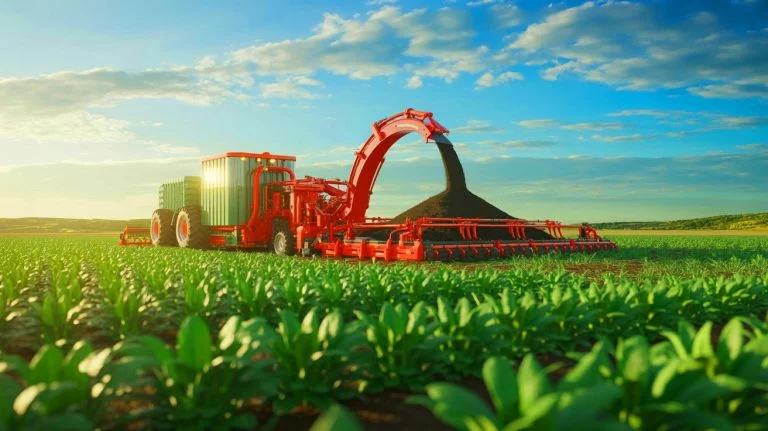| IN A NUTSHELL |
|
In a remarkable demonstration of innovation, the United States has embarked on a groundbreaking initiative aimed at addressing the issue of atmospheric carbon dioxide emissions. Recent advancements have led to the development of engines powered by seawater, and now, the U.S. is focusing on absorbing the atmosphere, specifically targeting the removal of carbon dioxide. This effort is particularly crucial given the ongoing threats of global warming and climate change. By tackling one of the primary drivers of global warming, the U.S. is taking significant strides in mitigating the impact of human activity on the planet.
Understanding Carbon Dioxide’s Role in Climate Change
Carbon dioxide, often referred to as CO2, is a colorless, odorless gas composed of oxygen and carbon. Despite its non-toxic nature, carbon dioxide emissions are a major contributor to global warming. These emissions primarily result from human activities, such as burning fossil fuels for energy. The long lifespan of CO2 in the atmosphere exacerbates its impact, leading to a persistent effect on the Earth’s climate. Its concentration in the atmosphere averages around 380 parts per million, a figure that underscores its pervasive presence.
While carbon dioxide is not directly harmful to human health, its accumulation in enclosed spaces can lead to oxygen displacement, posing potential risks such as asphyxiation. As such, managing CO2 levels is essential, not only for the well-being of the planet but also for human safety. The urgency to address CO2 emissions has prompted innovative solutions, with the United States taking a proactive approach to capture and utilize this gas effectively.
The United States Has a Plan for CO2 in the Atmosphere
A revolutionary step in managing atmospheric carbon dioxide involves an agricultural robot developed by a U.S. startup called Applied Carbon. This robot converts plant waste into biochar, a charcoal-like substance capable of securely locking away carbon for decades. Biochar production is an ancient practice, once used to enrich soils in the Amazon basin, with remnants still evident in about 10% of the soils in that region today.
Applied Carbon’s technology aims to remove up to 2 billion metric tons of carbon annually while simultaneously enhancing crop yields. However, the logistics of biochar production pose significant challenges. Gathering and transporting plant waste to processing facilities is costly and energy-intensive, often offsetting the carbon benefits. Applied Carbon addresses this issue by bringing the biochar production facility directly to the farm, creating an efficient and practical solution to the carbon problem.
The Revolutionary Approach to Biochar Production
To overcome logistical challenges, Applied Carbon has introduced a novel approach by integrating biochar production directly into the farming process. The company has developed an agricultural machine, inspired by a steampunk design, that simplifies the conversion of crop residues into biochar. This machine, towed by a tractor and fed by a harvester, shreds the crop residues before drying them using recycled hot gas from its pyrolysis reactor.
During pyrolysis, the shredded waste is transformed into biochar and syngas, which powers the machine. The resulting biochar is quenched with water, spread onto the soil, and mixed using a disc harrow. This approach not only minimizes transportation costs but also ensures that the carbon benefits of biochar are maximized. By simplifying the production process, Applied Carbon is paving the way for widespread adoption of biochar as a sustainable solution to atmospheric carbon dioxide.
Innovation and the Future of Carbon Management
As the United States continues to innovate in the field of carbon management, the implications for global climate change are profound. The integration of biochar production into agricultural practices represents a significant step forward in reducing atmospheric CO2 levels. By locking away carbon in a stable form, biochar not only mitigates climate change but also enhances soil fertility and crop yields, offering a dual benefit to farmers and the environment.
The success of such initiatives relies on continued investment in and development of sustainable technologies. As countries around the world seek effective ways to combat climate change, the pioneering efforts of the United States in atmospheric absorption and biochar production offer a promising model. Can these innovations inspire a global movement toward more sustainable practices in carbon management?
Did you like it? 4.5/5 (23)








Isn’t this just another way for big corporations to dodge responsibility? 🤔
Thank you for shedding light on this important topic! More people need to know about carbon burial. 🙏
I’m skeptical. How do we know the carbon won’t just leak back into the atmosphere?
Biochar sounds like something straight out of a sci-fi movie!
So, who’s really paying for all this? Taxpayers or the ‘eco-elites’?
Great article! I learned so much about CO2 and its impact on climate change.
What happens if the robot malfunctions? Can it cause any harm to the environment?
Seems like a good idea, but what about the long-term effects on soil health?
Why are rural Americans the ones paying the price here?
LOL, playing God with our air? That’s a bit dramatic, don’t you think?
Curious if this biochar tech is being used anywhere else in the world?
Is this going to affect the cost of food? I’m worried about rising prices. 😟
Love the innovation, but can we really trust these startups to save the planet?
Can someone explain what biochar actually does in simple terms for us non-scientists?
What about the energy used by these machines? Isn’t that counterproductive?
Thanks for the insights. It’s good to see steps being taken to combat climate change.
Sounds like a win-win, but something about this still feels off to me.
Are there any risks associated with spreading biochar on soil?
Why isn’t this being talked about more in mainstream media?
I’m all for new tech, but how do we know this isn’t just a PR move?
So, this is just one big science experiment with the planet? 😅
How do we ensure that this technology benefits everyone and not just the rich?
Sure, it’s a cool idea, but what about the jobs that might be lost due to automation?
Great read! Hope to see more articles like this in the future.
Do we have any data on how effective biochar has been so far?
What’s the timeline for seeing real results from this initiative?
Biochar’s been around for centuries, right? How is this any different?
I wonder how the farmers feel about these changes. Are they supportive?